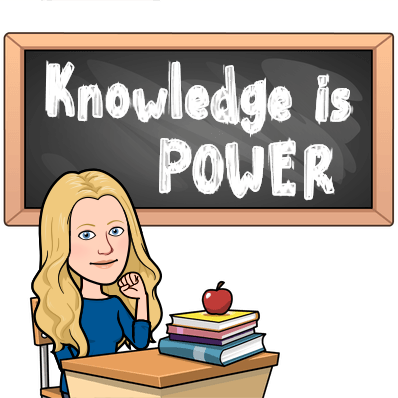Online learning: how to improve online learning
- alisonproofreader

- Oct 14, 2020
- 5 min read
Updated: Nov 4, 2020


Online learning: how to improve online learning
The Covid pandemic has prompted a surge in online learning. This, in turn, has resulted in the creation of all sorts of new learning materials, but increases in production haven't always been backed up by careful quality checks. This matters because lapses in quality and consistency can reflect badly on an organisation. In this blog, I'll be looking at the importance of copyediting. I'll explain what it is and some of the lessons I've learnt during my experiences of copyediting online learning materials.
What is copyediting?
What is online learning?
Accommodate different learning styles
Follow the editorial brief
Interact with the content
Ensure the progression of skills
What is copyediting?
Copyediting is an in-depth process that includes all the usual proofreading checks, but also checks for flow, structure and technical quality.
What is online learning?
Online learning can come in many forms:
Videos,
Multiple-choice questions,
Fill in the blank style questions,
Information shared through written texts,
Diagrams and pop-up boxes,
Interactive games.
Whatever the format, the purpose is the same: to teach effectively online.
Many schools, universities and publishers are working together to create content to replace the traditional methods of teaching with online learning. In my opinion, the best content is interactive.
I have undertaken many online learning courses as an adult, and I have learnt the most where I interacted with the learning and received feedback.

An example of good use of video in online learning is the maths factor by Carol Vorderman.
I enjoyed editing these videos because they apply best practice throughout:
The learning is broken down into simple steps similar to a real-life lesson in a classroom.
First, there is a video to teach the new skill with lots of visuals and working through examples together.
Next, there is a warm-up activity which is fun and interactive to get the brain working.
Last, there is a practice activity to consolidate what has been learnt.
The videos use a variety of different media – videos, quick questions and longer tests – and it's all interactive, with lots of repetition to grasp the skills. They capture children's attention using visuals, moving parts, sound and quick-fire content to keep the learning moving.
Accommodate different learning styles
Everyone has a different preferred learning style, and it is important that this is reflected in the online learning. Personally, I am a visual learner. When I am learning something new, I take the skill in much better if I can see it written down. This kind of visual learner responds well to information portrayed in charts and diagrams, which is probably why I enjoy maths so much.
Other types of learners include:
Auditory: Learners prefer to hear the information.
Reading/Writing: Learners prefer to learn from the written word, making notes themselves and reading the information.
Kinaesthetic: Learners using all of their senses and prefer interactive experiences.
So I believe the best online learning has variety and appeals in one way to each of the individual learning styles. Online learning could include:
A voice-over to share the learning using sound.
Visual representations, using images to explain the learning.
Written words to share the information (with time to make notes). Interactive sections (with moving parts and hands-on learning if possible).
Follow the editorial brief
When working with online learning, you usually get given an editorial brief to guide you. Most schools and universities have preferred styles of teaching and strict guidelines on what the content should include.
So I always start by reading through the brief and making notes to help me memorise the style. It is like getting to know a new language, finding out what words they like, how they spell them, how to represent numbers, what style of questions they prefer, what they call different aspects and how they use images. Once you are familiar with their language, you are ready to start.
I usually begin by searching for keywords from the brief; for example, they prefer the word 'learned' over 'learnt'. So I search for it and make the necessary changes. I am a methodical person, so I work my way through the brief searching the document for the key aspects.
Then I start at the beginning, reading through the document with the brief on the screen next to me, double-checking everything against the brief to ensure I am comfortable with the style they want. I work my way through the whole document against the brief. This is a basic read-through, including proofreading and checking style preferences.
An editorial brief is a massive help to the copyeditor and author, enabling them to work together to achieve the desired content. If there is no brief, I can create an editorial brief whilst editing the learning, noting style choices and consistency of the content. This can then be used for future online learning.
Interact with the content
Next, I want to check that the content works. So I do a run-through as though I am the learner interacting with the content and learning the new skills. I check it all works. For example, when I click on the buttons, are the answers revealed and are the answers correct?
Online learning needs to be interactive to engage the learner, and all the aspects have to work, buttons, links, images, sound, videos and moving parts.
I consider everything:
Is the learning manageable to would it hold peoples attention?
Would it engage them, or would they switch off?
Is there enough content or enough interactive sections?
Are the videos too long?
Clearly, the copyediting process is more than just a basic read-through it entails offering suggestions on how to improve the content to ensure flow and structure. It is an in-depth look at the content, testing all aspects and ensuring quality content.
Ensure the progression of skills
This process of ensuring quality content is considerably easier for copyeditors with educational experience because they will have a good understanding of how skills progression works.
Good copyediting begins by assuming the teacher's perspective; it involves understanding the core knowledge being taught and using appropriate resources such as the National Curriculum to monitor the learning. This all helps emulate the experience of working with a real-life teacher.
I ask myself the following questions when copyediting the learning content:
Does each piece of content follow on from the next?
Is it broken down into manageable steps?
Is it easy to follow?
Would there be a better way of explaining it?
Is it too difficult? Or is it enough of a challenge?
Are the visuals really necessary; do they improve the learning experience?
Are these skills covered in other videos?
There are many aspects to think about when copyediting online learning, but they are all vital steps that will help to safeguard the client's image and reputation. The quality of online learning materials has a direct bearing on how learners perceive the teaching organisation that provides them, so it's important that they reflect well upon it.
Taking a broad, systematic, step-by-step approach to copyediting is important, and should always culminate in a quality learning experience.
"Online learning is not the next big thing, it is the now big thing.” - Donna J. Abernathy
I am a freelance proofreader and a qualified teacher with a love of learning. If you need support with your online learning, please contact me. Thank you for reading 'Online learning: how to improve online learning'. Want to find more out about how I proofread a book for a publisher?
Check out my blog "Publishers: how to approach proofreading a book for a publisher" on my website www.alisonproofreader.com, or say hello on Twitter at @alisonproofread, or Instagram at @alisonproofreader, or connect via Facebook and LinkedIn.
Keywords
Online learning - interactive learning which people access through the internet.
Proofreading - examining your text carefully to find and correct mistakes in grammar, style, punctuation, consistency and spelling.
Copyediting - a more in-depth process that includes all the proofreading checks. But also checks for flow, structure and technical quality.
References
Learning quote from - https://elearningindustry.com/inspirational-elearning-quotes-for-elearning-professionals










Comments